
| Crowns of Egypt | 
|
|
Ancient Egypt for kids - Egyptian Crowns and Headdresses of Gods The history the ancient Egyptians and the significance of the red, white and double crown of Egypt |
|
Headdresses and Crowns of Egypt
Discover the history and religious beliefs surrounding the different types and styles of the crown of Egypt. The red, white and double crown of Egypt feature in many images, hieroglyphs, pictures and amulets found in ancient Egypt. The different styles of the royal crown of Egypt all had meanings, some were worn by the Pharaoh and others by the ancient Egyptian gods. The different types of crowns of Egypt represented status, power and authority of both the Egyptian Pharaohs and gods. The crowns associated with Egypt included the Atef, the Deshret, the Hedjet and the Pshent. Headdresses include the Khepresh that was the blue crown that was worn in battle. |
|
Facts about the Crowns of Egypt
The different crowns of Egypt are depicted in ancient Egyptian Hieroglyphics, art, artefacts and relics. Examples of the crowns and headdresses can be found in the tombs, temples and manuscripts of the ancient Egyptians. The following fact File provides a fast overview of the different Crowns and Headdresses worn by the ancient Egyptians. Discover the names, a description and the significance and symbolism of the different styles of Headdresses and different types of Crowns of Egypt. The Crowns of Egypt Fact File |
The Red Crown of Egypt |
The Deshret Crown
|
The Red Crown was called the Deshret and was the symbol that represented Lower Egypt (the North of Egypt)
| | The White Crown of Egypt | The Hedjet Crown 
| The White Crown was called the Hedjet, the symbol that represented Upper Egypt (the South of Egypt)
| | The Red and White Double Crown of Egypt | The Pshent Crown 
| The Pshent combines the red and white Double Crown and represented a unified Egypt, a combination of the red crown and the white crown
| | The White Crown of Osiris: | The Atef Crown 
| The Atef crown was worn by Osiris, the god of death. It was a tall, conical, white crown with ostrich feathers on each side. The Atef was occasionally depicted topped with a gold disk and represented Upper Egypt. The plumed headdress is possibly a representation of the plumes of the sacred Bennu bird.
| | The Blue Crown of Egypt | The Khepresh Crown 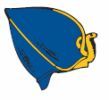
| The Khepresh was the blue crown that was worn by Pharaohs in battle and featured the rearing cobra uraeus symbol on the front of the crown
| | The Rearing Cobra symbol | The Uraeus 
| The Uraeus was the rearing cobra emblem and symbol of the Pharaohs of Lower Egypt. The uraeus appears as a symbol worn on the royal crowns and nemes of Egypt and is also associated with the sun and with many Egyptian gods and goddesses | | The Double Feathers | The Shuti Crown 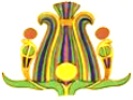
| The Shuti, meaning the Two Feathers (divine law), consisted of two, tall ostrich or falcon feathers and often combined with ram horns, a Uraeus or a sun disk. This crown is worn by the creator god Heryshaf.
| | The Amun Crown | Double Plumed Crown 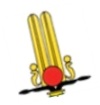
| The Double Plumed, aka the Amun Crown, was another style of the Shuti and consisted of double, tall feathers as worn by the god Amun and the falcon-headed god Menthu. | 
| | The Four Feathers Crown | Four Feathers 
| The four feathers crown was worn by the god Anhur the Egyptian god of war and patron of the Egyptian army and royal warriors. | | The Rush Crown | The Hemhem Crown 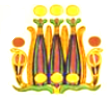
| The highly elaborate rush crown was constructed from a series of reeds and flanked by ostrich feathers. The Hemhem was the Triple Rush Crown that was worn tilted towards the back of the head. It is set on ram horns and flanked by ostrich feathers with sun disks and/or Uraeus. The Hemhem crown first appeared in the reign of Akhenaten and was connected to the sun and rebirth. Heka the god of magic was depicted wearing the Hemhem Crown
| | The Striped Head cloth | The Nemes 
| The Nemes was the striped head cloth worn by the pharaohs which was tied at the back of the head with lappets that fell down either side of the face. A lappet is a decorative flap or fold in a ceremonial headdress or garment.
| | Head Horns Crown | Cow Horns Crown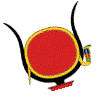 | The cow horns crown is worn by the cow goddesses Isis and Hathor, consisting of head horns in which a sun disk is set, a uraeus cobra symbol is often depicted. | | Royal Vulture Crown | Royal Vulture Crown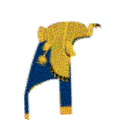 | Royal Vulture Crown consisted of a falcon feather headdress with its wings spread round her head in the act of protection, adorned by a Uraeus. | | The Single Ostrich feather | Ostrich feather

| There was a belief that the heat of the sun caused ostrich eggs to hatch which was seen as a re-enactment of creation and made the ostrich a symbol of creation and light as worn by the God Shu. The Feather of Maat represented truth, order and justice | | Diadems | The Seshed 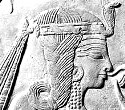
| The Seshed headdress consisted of a metal headband to which a Uraeus was attached
| | Plain Head cloth | The Khat or Afnet
 | The Khat or Afnet headdress was similar to the Nemes but made from a plain material like a kerchief and secured at the back under a head band, it did not have pleats or stripes
| | Cap Crown | The Cap Crown
 | The Cap Crown is usually plain or decorated with horizontal lines or with circles. The Cap Crown bears the uraeus.
| | The Modius | Modius
 | The modius was a type of flat-topped cylindrical headdress or crown of various sizes usually worn by queens or goddesses. A small modius was also used as a crown base for the headdresses of male and female gods | | The Modius crown base | Modius base
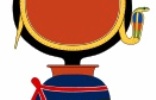 | A small modius was also used as a crown base for the headdresses of male and female gods | | Feathers mounted on a modius crown base | Crown of Anuket 
| The goddess Anuket, the "Mistress of Nubia" was worshipped outside Egypt in Africa and her crown resembles that of a type of headdress worn by an African chief |  |

The highly elaborate Hemhem Crowns worn by Akhenaten and Nefertiti |
|
The Crowns of Egypt - The Headdresses & Crowns of the Egyptian Gods
The gods and goddesses of ancient Egypt were also famous for their Crowns and Headdresses. The headdresses and crowns of the Egyptian gods as depicted on various forms of art allowed people to tell the deities apart. Many of the gods were strongly associated with the Pharaohs of Egypt and wore similar crowns. The headdresses and crowns of others reflected their attributes and powers. The following pictures provide information about some of these ancient gods and goddesses and the symbolism of their headdresses. The Headdresses & Crowns of the Egyptian Gods | The god Atum was usually depicted wearing the striped Nemes head cloth or the plain Khat headdress of a Pharaoh, and in this picture also wears the ceremonial 'Osird' beard. Beards with an upward pointing curl were called an “osird” or “the divine beard". Living pharaohs wore a beard with a straight edge. Only when they died could they wear the “osird”
| The goddess Isis is usually depicted wearing an unusual step headdress which symbolizes the throne of Egypt.
| The goddess Mut, the mother goddess wore the Pshent, the red and white double crown that represented a unified Egypt over a falcon feather headdress adorned by a Uraeus.
| The god Nefertum is usually depicted wearing a Nemes headdress that is crowned by a depiction of a lotus flower, symbolizing Upper Egypt and the sun, healing and re-birth.
| The goddess Maat is usually depicted with a long ostrich feather, as a symbol of truth, attached to a head band. The ostrich feather symbolized justice, balance and freedom.
| The god Amun wears the Shuti, the crown of Two Feathers (divine law). He also wears the red crown |
|
|
The Crown of Egypt- Interesting research information and Facts about the crown of Egypt
- The sacred symbol of ancient Egyptian Pharoahs and gods
- History and Egyptian Mythology associated with the crowns of Egypt
- Facts and information about the gods and deities of of classical Egypt for schools, research and kids
- Pictures, Descriptions and definitions of the crown of Egypt for kids
|
| | |
|
Facts about the Crowns of Egypt - The Headdresses & Crowns of the Egyptian Gods
The pictures and images provide facts and interesting information about some of the ancient gods and goddesses and the symbolism of their crowns and headdresses. The Headdresses & Crowns of the Egyptian Gods | Ra, the Supreme Solar God is usually depicted with the head of the falcon and is wearing the nemes toped by a solar disk with a Uraeus, the rearing cobra emblem.
| The goddess Nephthys wears a most unusual headdress. Her name meant 'Mistress of the House' and the headdress consists of a house topped by a basket.
| The god Osiris wears the Atef crown and carries the attributes of his kingship of the Underworld
| The peculiar symbol that crowns the goddess Selket represents a scorpion
| The god Ptah wears the cap crown, which is usually depicted in blue which represented water, the sky, life, fertility and re-birth. It was often worn by the mourners of Osiris.
| The goddess Hathor is associated with the solar disk and the horns of the cow. Her crown is also adorned with the Uraeus, the rearing cobra emblem.
| The goddess Seshat, goddess of wisdom, knowledge, and writing wears an undetermined style of headdress, some believe it represents a star but most experts believe it represents a lotus flower, a water lily. |
|
|
|
|